| In the 17th century, English herbalist Nicholas Culpeper recommended comfrey roots for wounds, sores, and broken bones. Comfrey contains allantoin, a compound that promotes the growth of new cells. Allantoin is the active ingredient in several over-the-counter skin creams, and prescription skin preparations.
There is some controversy surrounding comfrey because researchers discovered it contains carcinogenic and liver-damaging chemicals, and while it may be advisable to not take this herb internally until further research is available, it is safe and useful when used externally on wounds. |
John Heinerman
See book keywords and concepts |
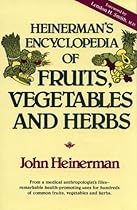 Unusual Mouth Wash
French herbalist, Maurice Mess^gue advises that carrot tops be made into a tea for an effective mouth wash and gargle, due to their strong antiseptic action. Bring 3 cups of water to a boil, adding 1/2 cup chopped carrot tops. Simmer for 20 minutes, steeping another 30 minutes. Strain and store in refrigerator. Rinse and gargle mouth each morning with some. Unusual Mouth Wash
French herbalist, Maurice Mess^gue advises that carrot tops be made into a tea for an effective mouth wash and gargle, due to their strong antiseptic action. Bring 3 cups of water to a boil, adding 1/2 cup chopped carrot tops. Simmer for 20 minutes, steeping another 30 minutes. Strain and store in refrigerator. Rinse and gargle mouth each morning with some. |
| Medicine for the Heart
The French herbalist, Maurice Messegue, recommends mullein for palpitations, irregular heartbeat, angina and other coronary distress. Simmer 2 handfuls of coarsely cut leaves and flowers in 1 1/2 qts. boiling water for an hour, covered, until about 1 pint remains. Strain and add 3 tbsps. blackstrap molasses and 1/2 tsp. glycerine to give it longer shelf life. Take 1 tbsp. of this syrup twice daily in between meals, once in the morning and again in the evening; or more if pressure builds up in the heart. |
| ARTICHOKE [Cynara scolymus)
Maurice Messegue, Europe's greatest herbalist, says that the part of the artichoke we are in the habit of eating is the least active, while all the rest of it, which is unbelievably bitter, is actually the most nutritious and therapeutic for you. "For myself," he states quite emphatically, "I use every bit of the artichoke and encourage others to do the same!"
Two vegetables are called artichokes, but have absolutely no relation to each other. We distinguish them as the globe artichoke and the Jerusalem artichoke. |
| Cures, Prevents Varicose Veins
Mike Tierra, a practicing herbalist in California recommends bay-berry for "relieving, curing and preventing varicose veins" as a fomentation. It is made by dipping a moisture-absorbent towel or cloth into some bayberry tea and applying the towel over the affected legs as hot as can be tolerated without burning. The towel is covered by dry flannel cloth and a heating pad or a hot water bottle is placed on top of this. A plastic covering can be used to protect bedding if applied overnight. |
| Varicose Veins Disappeared
A West German herbalist, Maria Treben, relates the following episode:
On a visit, the lady of the house showed me her legs covered with varicose veins. I fetched calendula from her garden and prepared the ointment [recipe listed below]. The residue I put immediately on her legs (the residue can be used four to five times). She spread the ointment, the thickness of the back of a knife, on a piece of linen and bandaged her legs with it. You will be surprised, when I tell you, that four weeks later, when she visited me at home, the varicose veins had disappeared. |
Andrew Chevallier
See book keywords and concepts |
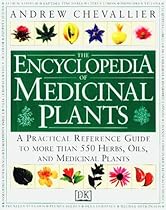 The first recipe could have been written by a modern, scientifically trained herbalist; the second, one must presume, is pure fancy as worms do not destroy teeth.
To Strengthen the Sight Take Eyebright and Red Fennel, a handful of each, and half a handful of Rue, distil, and wash your eye daily therewith.
To Destroy a Worm in the Tooth Take the root of a cat's ear, bruise, and apply to the patient's tooth for three nights, and it will kill the worm. The first recipe could have been written by a modern, scientifically trained herbalist; the second, one must presume, is pure fancy as worms do not destroy teeth.
To Strengthen the Sight Take Eyebright and Red Fennel, a handful of each, and half a handful of Rue, distil, and wash your eye daily therewith.
To Destroy a Worm in the Tooth Take the root of a cat's ear, bruise, and apply to the patient's tooth for three nights, and it will kill the worm. |
Rebecca Wood
See book keywords and concepts |
 Second only to salt as an Asian condiment, as a medicinal, ginger is even more remarkable. herbalist Deni Bown notes that ginger occurs in about half of all Chinese and Ayurvedic prescriptions and in Ayruveda is known as vishwabhesaj, or "universal medicine." Equally valued in the West, it was listed as a taxable commodity by the Romans in a.d. 200.
Ginger in medieval England was understood to "quycken the remembraunce," writes Lorna Sass in To the King's Taste: Richard II's Book of Feasts and Recipes. Second only to salt as an Asian condiment, as a medicinal, ginger is even more remarkable. herbalist Deni Bown notes that ginger occurs in about half of all Chinese and Ayurvedic prescriptions and in Ayruveda is known as vishwabhesaj, or "universal medicine." Equally valued in the West, it was listed as a taxable commodity by the Romans in a.d. 200.
Ginger in medieval England was understood to "quycken the remembraunce," writes Lorna Sass in To the King's Taste: Richard II's Book of Feasts and Recipes. |
Patrick Quillin, PhD,RD,CNS
See book keywords and concepts |
 While we have a tendency to think of herbs as mysterious plant concoction blended up for a very sick person by some eccentric older woman (the quintessential herbalist), in fact our ancestors ate potent anti-cancer herbs in their diet and as seasonings each day.
Columbus set sail in a mad suicidal adventure over the edge of the earth in the unlikely event that he might find the Spice Islands, near India. Spices (a.k.a. seasonings, herbs, botanicals) have been used throughout history to cover the rotting stench of unrefrigerated food. While we have a tendency to think of herbs as mysterious plant concoction blended up for a very sick person by some eccentric older woman (the quintessential herbalist), in fact our ancestors ate potent anti-cancer herbs in their diet and as seasonings each day.
Columbus set sail in a mad suicidal adventure over the edge of the earth in the unlikely event that he might find the Spice Islands, near India. Spices (a.k.a. seasonings, herbs, botanicals) have been used throughout history to cover the rotting stench of unrefrigerated food. |
John Heinerman
See book keywords and concepts |
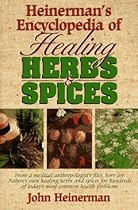 Cures, Prevents Varicose Veins
Mike Tierra, a practicing California herbalist, recommends bayberry for "relieving, curing and preventing varicose veins" as a fomentation. It is made by dipping a moisture-absorbent towel or cloth into some bayberry tea and applying the towel over the affected legs as hot as can be tolerated without burning. The towel is covered by dry flannel cloth and a heating pad or a hot water bottle is placed on top of this. A plastic covering can be used to protect bedding if applied overnight. Cures, Prevents Varicose Veins
Mike Tierra, a practicing California herbalist, recommends bayberry for "relieving, curing and preventing varicose veins" as a fomentation. It is made by dipping a moisture-absorbent towel or cloth into some bayberry tea and applying the towel over the affected legs as hot as can be tolerated without burning. The towel is covered by dry flannel cloth and a heating pad or a hot water bottle is placed on top of this. A plastic covering can be used to protect bedding if applied overnight. |
Christian Ratsch
See book keywords and concepts |
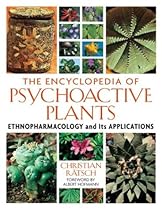 Archaeological Museum of Peshawar (India) depicts the Buddha as an herbalist. Farmers are shown offering him bundles of stalks which Mahdihassan (1963 and 1991) has interpreted as those of Ephedra gerardiana.
Medicinal Use
In Ayurvedic medicine, an Ephedra tea (6 g per dosage) is used to treat colds, coughs, wheezing, bronchitis, asthma, arthritis, and dropsy. To avoid undesirable side effects (such as tachycardia), licorice (Glycyrrhizaglabra L.) can be added to the Ephedra tea. Archaeological Museum of Peshawar (India) depicts the Buddha as an herbalist. Farmers are shown offering him bundles of stalks which Mahdihassan (1963 and 1991) has interpreted as those of Ephedra gerardiana.
Medicinal Use
In Ayurvedic medicine, an Ephedra tea (6 g per dosage) is used to treat colds, coughs, wheezing, bronchitis, asthma, arthritis, and dropsy. To avoid undesirable side effects (such as tachycardia), licorice (Glycyrrhizaglabra L.) can be added to the Ephedra tea. |
Mark Stengler, N.D.
See book keywords and concepts |
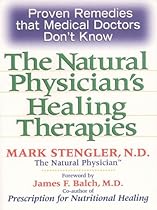 I saw a herbalist who recommended a few different herbal menopausal formulas, but they didn't seem to stop the hot flashes," Leanne said.
By the end of the examination, I had concluded that natural progesterone would be good for Leanne to try. I explained to her that the term "natural" was the best possible description of what it actually was. "This is exactly the same progesterone that your body produces."
Leanne had heard of it. She said that some of her friends had used it with positive results. She was ready to give it a try. I saw a herbalist who recommended a few different herbal menopausal formulas, but they didn't seem to stop the hot flashes," Leanne said.
By the end of the examination, I had concluded that natural progesterone would be good for Leanne to try. I explained to her that the term "natural" was the best possible description of what it actually was. "This is exactly the same progesterone that your body produces."
Leanne had heard of it. She said that some of her friends had used it with positive results. She was ready to give it a try. |
| The highly regarded German medical doctor and herbalist Rudolph Weiss states in his book Herbal Medicine that "Chamomile does not merely give symptomatic relief in these cases (of ulcers], but directly effects a cure...." But he also notes that large doses of chamomile tea or tincture need to be given for prolonged periods of time for complete healing to occur.
I would recommend at least two months of continuous use.
Chromium
"Mark, I have been following the exercise program you recommended and have been doing pretty well on my diet. |
Michael Castleman
See book keywords and concepts |
 The following recommendations come from the books by Wor-wood and Lavabre and The Aromatherapy Book by San Francisco herbalist Jeanne Rose.
Abrasions, cuts, burns and scrapes. After washing with soap and water, apply one to three drops of lavender oil or tea tree oil to the wound or to a bandage. Reapply the oil twice a day until the area is substantially healed.
Athlete's foot. Mix two drops of lavender oil and one drop of tea tree oil. Using a cotton swab, apply it between the toes. Then dilute five drops of tea tree oil and one drop of lemon oil in one teaspoon of vegetable oil. The following recommendations come from the books by Wor-wood and Lavabre and The Aromatherapy Book by San Francisco herbalist Jeanne Rose.
Abrasions, cuts, burns and scrapes. After washing with soap and water, apply one to three drops of lavender oil or tea tree oil to the wound or to a bandage. Reapply the oil twice a day until the area is substantially healed.
Athlete's foot. Mix two drops of lavender oil and one drop of tea tree oil. Using a cotton swab, apply it between the toes. Then dilute five drops of tea tree oil and one drop of lemon oil in one teaspoon of vegetable oil. |
| For minor skin infections, garlic juice may prove sufficient, but unless you're an experienced herbalist, don't rely exclusively on garlic to treat infectious diseases. Instead, take it in addition to standard medication. You must chew the fresh cloves to transform alliin into allicin. One medium-size garlic clove packs the antibacterial punch of about 100,000 standard units of penicillin. Depending on the type of infection, oral penicillin doses typically range from 600,000 to 1.2 million units, or the equivalent of about 6 to 12 cloves.
Lead poisoning. |
| In 1640, British botanist John Parkinson called feverfew "very effectual for paines in the head," and a century later, another English herbalist, John Hill, wrote that "in the worst headache, this herb exceeds whatever else is known." But their recommendations were largely forgotten.
Then about ten years ago, a happy accident occurred. The wife of a doctor with the British National Coal Board had migraines. A coal miner confided that he'd been cursed with the horrible headaches until he began chewing two feverfew leaves a day. |
Andrew Chevallier
See book keywords and concepts |
 History & Folklore The herbalist John Gerard, writing in 1597, extoled borage's virtues: "A syrup made of the flowers of borage comforteth the heart, purgeth melancholy, and quieteth the phreneticke or lunaticke person." Gerard also quoted the old saying, "I, Borage, bring always courage." Medicinal Actions & Uses With its high mucilage content, borage is a demulcent and soothes respiratory problems. Its emollient qualities make it helpful for sore and inflamed skin - prepared either as freshly squeezed juice, in a poultice, or as an infusion. History & Folklore The herbalist John Gerard, writing in 1597, extoled borage's virtues: "A syrup made of the flowers of borage comforteth the heart, purgeth melancholy, and quieteth the phreneticke or lunaticke person." Gerard also quoted the old saying, "I, Borage, bring always courage." Medicinal Actions & Uses With its high mucilage content, borage is a demulcent and soothes respiratory problems. Its emollient qualities make it helpful for sore and inflamed skin - prepared either as freshly squeezed juice, in a poultice, or as an infusion. |
National Women's Health Network
See book keywords and concepts |
 Your health care provider is an alternative medicine practitioner (naturopath, acupuncturist, herbalist, chiropractor, etc.) and has recommended that you take a dietary supplement, herb, or natural hormone product because you're approaching or experiencing menopause.
Many people don't realize that just as pharmaceutical companies promote drugs, so too is there a whole industry out there developing, producing, and selling dietary supplements, herbs, and other alternative health care products. Your health care provider is an alternative medicine practitioner (naturopath, acupuncturist, herbalist, chiropractor, etc.) and has recommended that you take a dietary supplement, herb, or natural hormone product because you're approaching or experiencing menopause.
Many people don't realize that just as pharmaceutical companies promote drugs, so too is there a whole industry out there developing, producing, and selling dietary supplements, herbs, and other alternative health care products. |
Michael Castleman
See book keywords and concepts |
 China's first historically recognized herbalist, Shen Nung (c. 3000 B.C.), called ginkgo "good for the heart and lungs." And traditional Chinese physicians have used it for thousands of years to treat asthma.
India's traditional Ayurvedic physicians believed ginkgo enhanced longevity. It was introduced into the West as an ornamental in the 1700s, and today thousands of huge ginkgoes adorn streets and parks from Prague to Portland, Oregon. But this herb was not used medicinally in the West until the early 1970s, when scientists proved old Shen Nung correct. China's first historically recognized herbalist, Shen Nung (c. 3000 B.C.), called ginkgo "good for the heart and lungs." And traditional Chinese physicians have used it for thousands of years to treat asthma.
India's traditional Ayurvedic physicians believed ginkgo enhanced longevity. It was introduced into the West as an ornamental in the 1700s, and today thousands of huge ginkgoes adorn streets and parks from Prague to Portland, Oregon. But this herb was not used medicinally in the West until the early 1970s, when scientists proved old Shen Nung correct. |
John Heinerman
See book keywords and concepts |
 ARTICHOKE
(Cynara scolymus)
Maurice Messegue, Europe's greatest herbalist, says that the part of the artichoke we are in the habit of eating is the least active, while all the rest of it, which is unbelievably bitter, is actually the most nutritious and therapeutic for you. "For myself," he states quite emphatically, "I use every bit of the artichoke and encourage others to do the same!"
Two vegetables are called artichokes, but have absolutely no relation to each other. We distinguish them as the globe artichoke and the Jerusalem artichoke. ARTICHOKE
(Cynara scolymus)
Maurice Messegue, Europe's greatest herbalist, says that the part of the artichoke we are in the habit of eating is the least active, while all the rest of it, which is unbelievably bitter, is actually the most nutritious and therapeutic for you. "For myself," he states quite emphatically, "I use every bit of the artichoke and encourage others to do the same!"
Two vegetables are called artichokes, but have absolutely no relation to each other. We distinguish them as the globe artichoke and the Jerusalem artichoke. |
Rebecca Wood
See book keywords and concepts |
 Health Benefits Enoki inhibits tumor growth and may prevent, as well as cure, liver disease and gastroenteric ulcers, according to herbalist and mushroom expert Christopher Hobbs, Lie.Ac. He advises against eating them raw with any frequency. Enoki contains flammutoxin, a protein toxic to the heart, which is rendered harmless when cooked. Use Unlike other mushrooms, the enoki is not earthy but has a delicate fruity flavor. Trim and discard the Separate the mushrooms, rinse, and add enoki to any sauteed vegetable, grain, or meat dish. Health Benefits Enoki inhibits tumor growth and may prevent, as well as cure, liver disease and gastroenteric ulcers, according to herbalist and mushroom expert Christopher Hobbs, Lie.Ac. He advises against eating them raw with any frequency. Enoki contains flammutoxin, a protein toxic to the heart, which is rendered harmless when cooked. Use Unlike other mushrooms, the enoki is not earthy but has a delicate fruity flavor. Trim and discard the Separate the mushrooms, rinse, and add enoki to any sauteed vegetable, grain, or meat dish. |
| Beloved and renowned Boulder, Colorado, herbalist Hannah Kroger used to use black radish and parsley in a formula for strep throat. Black radishes are available in the fall and winter and hold better through the winter than do other radishes.
Scrub the radish with a vegetable brush to remove any dirt and trim damaged or dehydrated spots. Peel only if the skin is tough and fibrous. Grate, dice, slice, or cut into little or big chunks and substitute black radish for daikon or turnip in soup, casseroles, or stir-fries or in steamed, blanched, or baked vegetable medleys. |
| It is used to treat (and prevent) breast and lung tumors and for premenstrual bloating. herbalist Michael Tierra calls it one of the best remedies for the treatment of hepatitis. Dandelion root contains inulin, which lowers blood sugar in diabetics. Dandelion reduces pitta and kapha.
A cup of dandelion greens provides nearly a day's requirement of vitamin A in the form of antioxidant carotenoid and a third of the daily vitamin C requirement. It contains more calcium than broccoli and is an excellent source of potassium. |
| German herbalist Gemot Katzer notes that the fruit's juice, which is intensely sour and has the same fragrance as the leaves, is sometimes added to fish or poultry dishes in Malaysia and Thailand.
Storage Because dried Kaffir lime leaves lose their flavor readily, they are best kept frozen.
See Chile Pepper; Citrus Family; Galan-gal; Garlic; Ginger.
KALE
Dinosaur, Italian, or Tuscan Kale, Ornamental Kale, Salad Savoy, Scotch or Curly Kale, Siberian or Russian Kale
(Brassica oleracea acephala)
Kale is the grandmother of the whole cabbage family. |
| Use it as a diuretic to ease edema, reduce high blood pressure, and to help dissolve kidney and gall stones. herbalist Michael Tierra observes that "Even though it is effective for kidney stones, it is one of the milder and safer diuretics."
Favor organic corn silk. Remove the corn husk, then the silk. Use it fresh in season or spread it on a dry surface to dry, which takes about three days. It will be brittle to the
FUNKY CANDY CANES
Compared to my Aunts Rosie and Barbara, who hand-dip chocolates, a candy maker I am not. |
Earl L. Mindell, R.Ph., Ph.D.
See book keywords and concepts |
 Ginseng has been used by the Chinese for centuries to help control diabetes, and recent studies confirm that it can reduce fasting blood glucose as well as improve mood and help in weight reduction. herbalist Donald Brown recommends a standardized extract with a 5 to 7 percent ginsenoside content. More or less can throw blood sugar off rather than bring it into balance. For this use, ginseng is probably best taken as a liquid extract.
One of the Ayurvedic herbs of choice in India for lowering blood sugar, now available in the U.S., is called gymenma sylvestre. Ginseng has been used by the Chinese for centuries to help control diabetes, and recent studies confirm that it can reduce fasting blood glucose as well as improve mood and help in weight reduction. herbalist Donald Brown recommends a standardized extract with a 5 to 7 percent ginsenoside content. More or less can throw blood sugar off rather than bring it into balance. For this use, ginseng is probably best taken as a liquid extract.
One of the Ayurvedic herbs of choice in India for lowering blood sugar, now available in the U.S., is called gymenma sylvestre. |
Elson M. Haas, M.D.
See book keywords and concepts |
 I remember a beautiful post-rain walk with herbalist Rob Menzies where we discovered nearly one hundred species of mushrooms.
White button, or field, mushrooms are found in most grocery stores and are the most commonly consumed. They may be the only variety known to most consumers, yet they have very little nutrition. Japanese shiitake mushrooms, boletus mushrooms, chanterelles, oyster mushrooms, and the tiny tree mushrooms are some other fairly common, more nutritious mushroom delicacies.
Most mushrooms have a fairly good protein content. I remember a beautiful post-rain walk with herbalist Rob Menzies where we discovered nearly one hundred species of mushrooms.
White button, or field, mushrooms are found in most grocery stores and are the most commonly consumed. They may be the only variety known to most consumers, yet they have very little nutrition. Japanese shiitake mushrooms, boletus mushrooms, chanterelles, oyster mushrooms, and the tiny tree mushrooms are some other fairly common, more nutritious mushroom delicacies.
Most mushrooms have a fairly good protein content. |
Textbook of Natural Medicine 2nd Edition Volume 1Michael T. Murray, ND
See book keywords and concepts |
| One of the reported "miracle elixirs of life", centella's reputation as a promoter of longevity stems from the report of Chinese herbalist, LiChing Yun, who reportedly lived 256 years. LiChing Yun's longevity was supposedly a result of his regular use of an herbal mixture chiefly composed of centella.6,7
Centella asiatica was first accepted as a drug in France in the 1880s. Since then, extracts of centella have been used in the treatment of many of the same conditions listed above along with those described in "Clinical applications" (p. 653). |
Andrew Chevallier
See book keywords and concepts |
 John Gerard called "the frensies.".
Thyme (Thymus vulgaris, p. 142) is a good antiseptic and tonic herb. It is particularly effective as a treatment for chest infections__
Common foxglove (Digitali. purpurea, p. 199) is the source of digitalis, a widely used cardiac stimulant
Heartsease (Viola tricolor, p. 280) gained its name from its former use in love potions. It is an effective expectorant, treating coughs and colds__
Lavender
(Lavandula officinalis, p. 107) yields an essential oil that is a good first-aid remedy for insect bites and sunburn gap* mi
Myrtle
(Myrtus communis, p. John Gerard called "the frensies.".
Thyme (Thymus vulgaris, p. 142) is a good antiseptic and tonic herb. It is particularly effective as a treatment for chest infections__
Common foxglove (Digitali. purpurea, p. 199) is the source of digitalis, a widely used cardiac stimulant
Heartsease (Viola tricolor, p. 280) gained its name from its former use in love potions. It is an effective expectorant, treating coughs and colds__
Lavender
(Lavandula officinalis, p. 107) yields an essential oil that is a good first-aid remedy for insect bites and sunburn gap* mi
Myrtle
(Myrtus communis, p. |
| Nicholas Culpeper. Medicinal Actions & Uses Alder buckthorn is a laxative and a cathartic, and is most commonly taken as a treatment for chronic constipation. Once dried and stored, it is significantly milder than senna (Cassia senna, p. 72) or common buckthorn (R. catharticus) and may be safely used over the long term to treat constipation and to encourage the return of regular bowel movements. Alder buckthorn is a particularly beneficial remedy if the muscles of the colon are weak and if there is poor bile flow. |












